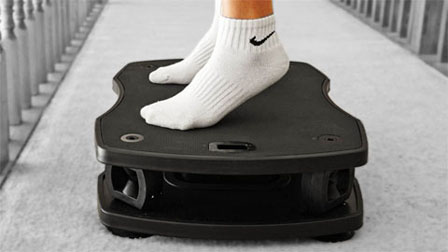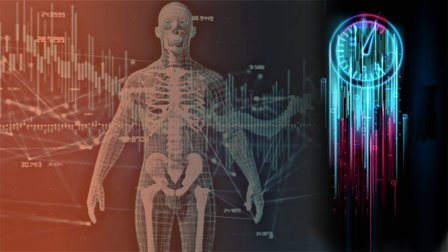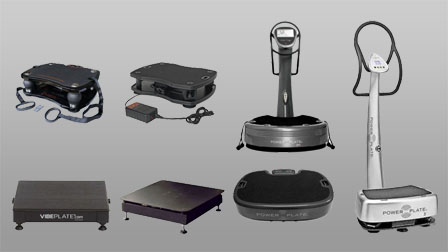- Vibration Plate Usability -
Floor Vibration Issue & Potential Damage to House
Vibration plates certainly vibrate floor. They should be used on a solid that can resist the vibration. Otherwise, the floor vibration can cause excessive noise and pose a risk of structural damage to the house.
Vibration plates are a relatively new type of home appliance, and their impact on home structures has not been investigated.
In this article, I explain the potential damages and provide a general guideline for properly placing a vibration plate in the house to minimize their negative impact.
I also examine the factors of vibration plates that contribute to the impact on the house, contrasting pivotal oscillation plates with linear vibration plates.
To better comprehend the magnitude of the impact on a house, I compare the vibration plates with washing machines, in terms of their specifications and impact analysis.
Page Content Index
- Potential Damage to House
- Placement Guide
- Pivotal Oscillation vs Linear Vibration
- Compared to Washing Machines
Potential Damage to House

Using a vibration plate on a wood-frame floor of a wood-frame house can cause noticeable shake of the floor and the adjacent structures, particularly when used on an upper level.
Wood structure tend to transmit and amplify vibrations. When a wood-frame floor is vibrated, the vibration can transfer through the floor joists to the connected stud walls, shaking the whole structure. Over time, repeated vibrations may compromise the structural integrity of the house.
90% of single houses in the United States are wood frame houses. You should consult a housing structure expert about using a vibration plate in your house.
Use of a vibration plate in a wood-frame structure apartment may disturb the neighbor.
Placement Guide
Place vibration plate on a solid floor
Vibration plates should be placed on a solid, vibration-resistant floor.
Concrete floors with carpet are the ideal choice for placing a vibration plate without significant impact to the adjacent house structure. Carpet does not absorb much vibration, but can prevent the vibration plate from drifting on the floor.
Wood floors are easy to get vibrated. If you must use your vibration plate on a wood floor, consider using a cushion or even reinforcing the sub floor.
Some wood floor or tile floors are securely attached to a concrete substrate. That may provide an adequate surface for using a vibration plate.
Choose a location close to load‑bearing walls
Load-bearing walls provide extra support and stability, reducing the likelihood of excessive vibrations transferring through the floor.
Avoid placing a vibration plate in the middle of a room as there is less structural support there.
Use anti-vibration cushion

Place a large cushion mat under the vibration plate to absorb down-ward vibrations.
A large EVA (Ethylene Vinyl Acetate) exercise mat with a thickness of 1/2" or 3/4", a size of 4'x4' or 4'x6' may be a practical solution. It has been approved by many of our customers.
Consider using a suitable isolation platforms. However, we don't have any recommendation.
Using an anti-vibration cushion under a vibration plate can reduce the vibration amplitude transferred to the user. That means the vibration is less intensive.
Pivotal Oscillation vs Linear Vibration
Pivotal oscillation plates and linear vibration plates are the two most popular types on the market, representing the full range of movement patterns, frequencies, and amplitudes found in most vibration plates. Understanding their impact is crucial for assessing how vibration plates can affect your home and identifying the factors that may contribute to potential damage.
A wood-frame house is more prone to damage from a low-frequency, high-amplitude pivotal oscillation plate than from a high-frequency, low-amplitude linear vibration plate.
Resonance effect on house
Pivotal oscillation plates are more likely to cause resonance vibrations with wood-frame houses.
What is resonance effect
When vibration is transferred from a source to an object, there is a specific frequency at which the object vibrates with the greatest amplitude. This phenomenon is known as resonance. The frequency at which resonance occurs is called the object's resonant frequency or natural frequency. .
Wood-framed houses typically have a natural frequency in the range of 4-8 Hz for floors and 10-15 Hz for other structures. This matches the frequency range of pivotal oscillation plate (5-15 Hz).
Vibrations generated by a pivotal oscillation plates is more likely to create resonance vibrations which amplifies the impact on the house's structure.
In comparison, linear vibration plates operate within a frequency range of 15-40 Hz, which avoids causing a resonance effect with the house. Their small amplitude (1-3 mm) results in lower movement strain on the house.
Resonnance with mucle tissues
Vibrations generated by high frequency linear vibration plate are in the frequency range (10-50Hz) to achieve resonance with skeletal muscles, other than to cause resonance with the house structure.
Amplitude matters
Pivotal plates typically have a higher amplitude (8-10 mm), which can cause greater structural strain on the house.
While linear vibration plates cause less structural strain on wood-frame houses compared to pivotal vibration plates, their higher vibration frequency means more impact repetitions.
Perceived effect on house
Although a pivotal oscillation plate can produce higher movement strain to the structure of a wood-frame house, a linear vibration plate can appear more intense on the wood floor due to its higher frequency.
Additionally, wood floor tends to amplify the sound waves generated by a linear vibration plate when the vibration frequency is above 20 Hz. This further enhances its perceived effect of impact on the house.
Summary
| Factors contributing to impact to a wood-frame house with natural frequency of 4 ‑ 15Hz | ||
| Pivotal Oscillation Plate | Linear Vibration Plate | |
| Frequency | 5 - 15Hz | 15 - 40Hz |
| Amplitude | 8 - 10mm | 1 - 3mm |
| Likelihood of Resonance with house | High | Low |
| Movement Strain | High | Low |
| Overall Damage Risk | High for wood-frame house | Low |
| Floor vibration Noise | Low | High |
| Floor Vibration Perception | Low | High |
| Impact Repetition | Less | More |
Compared to Washing Machines
It makes sense to compare vibration plates to washing machines in terms of their impact on a house, as most people are already familiar with the effects of a washing machine.
Both appliances transmit vibrations to the floor and nearby structures. If placed on a flexible surface like a wood-frame floor, the vibrations can amplify, potentially leading to structural strain.
Both machines perform better on rigid, stable surfaces like concrete. Anti-vibration cushions are recommended for both to minimize vibration transfer.
| Washing Machines | Vibration Plates | |
| Frequency Range | Washing Cycle: 1‑5Hz Spin Cycle: 10‑30Hz |
Pivotal Oscillation: 5‑15Hz Linear Vibration: 15‑40Hz |
| Amplitude | Moderate amplitude due to drum movement, particularly during spin cycles | Pivotal Oscillation: 8-10mm Linear Vibration: 1-3mm |
| Duration of Use | 30?C60 min | 10?C20 min |
| Loaded Weight | 200-300 lb | 180-300 lb |
| Structural Resonance | May cause significant resonance on wood floors if unbalanced | Pivotal Oscillation: Yes Linear Vibration: No |
Washing machines, particularly during unbalanced spin cycles, generally exert more strain on a house??s structure than vibration plates due to their greater weight and longer operating times.
Pivotal oscillation plates are more likely to produce a resonance effect with a wood-frame house, amplifying the strain on the house??s structure. In contrast, linear vibration models may cause more noticeable vibrations and noise, especially on wood-frame floors.



